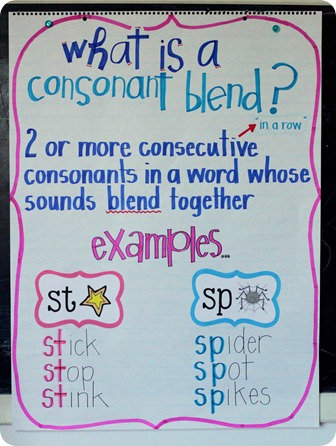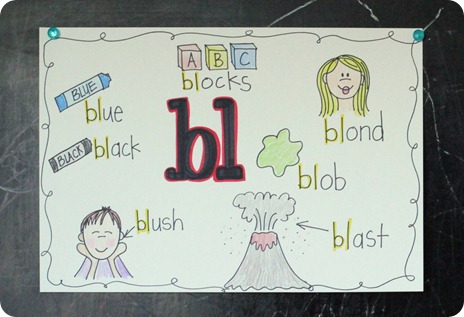RF.1.2.B.iii: Orally Produce Single-Syllable CCVC, CVCC, CCVCC, CCCVC, CCCVCC Words by Blending Four or More Phonemes
Skill
RF.1.2.B.iii: Orally Produce Single-Syllable CCVC, CVCC, CCVCC, CCCVC, CCCVCC Words by Blending Four or More Phonemes
Standard
CCSS.ELA-LITERACY.RF.1.2.B: Orally produce single-syllable words by blending sounds (phonemes), including consonant blends.
Description
- Mastery: Student is able to orally produce a series of CCVC, CVCC, CCVCC, CCCVC, CCCVCC words with accuracy and speed, when teacher provides phonemes with definite pauses in between each phoneme.
- Acquiring: Student is able to produce the CCVC, CVCC, CCVCC, CCCVC, CCCVCC words with the support of gestures (moving hands/sounds together) to represent the blending of the phonemes. The teacher may need to elongate sounds with minimal pause between phonemes and may need to repeat phonemes.
Probes
T: /p/ /ā/ /s/ /t/. What’s the word?
S: paste
T: /f/ /r/ /ā/ /m/. What’s the word?
S: frame
T: /s/ /t/ /ŏ/ /p/. What’s the word?
S: stop
T: /b/ /l/ /ĕ/ /n/ /d/. What’s the word?
S: blend
T: /s/ /p/ /l/ /ă/ /sh/. What’s the word?
S: splash
T: /s/ /p/ /r/ /ĭ/ /n/ /t/. What’s the word?
S: sprint
Activities and Resources
Small Group Instruction – Direct Instruction
PA.013 What’s My Word (suggestion: use as small group instead of headphones and recorder)
Introduce Phoneme Blending
Phoneme Blending Accuracy
Guess It game (prepare list of words ahead of time)
Blending – Robot Talk (prepare list of familiar words ahead of time)
During Transition
Sound Blending using songs
Old Macdonald Had a Farm
Reinforce Skills/Independent Work Time – Independent/Small Group Center Activity
CCVC, CVCC, CCVCC, CCCVC, CCCVCC Word List (post pictures of the words)
Display (e.g. Anchor Chart):
  |
|
| Source: The Inspired Apple |
Considerations & Reminders
- As students begin to learn phoneme blending skills, it is easier to blend words with continuous initial sounds (e.g., /m/, /s/, /i/) than words with stop sounds (e.g., /t/, /q/, /p/). For example, “fffffrrrrrraaaaaammmm” is easier to orally blend than “sssstooooop.” When introducing words with continuous sounds, exaggerate by holding on to them: rrrrrring; for words with stop sounds, use iteration (rapid repetition): k-k-k-k-katie.
- When blending phonemes, it is always important to be mindful of the lapse of time between each phoneme presented. The shorter the pause, the easier it is for a student to hear the whole word. Longer pauses between the phonemes creates a little more of a challenge for the student to put the sounds back into the word.
- Teachers can use the body to blend phonemes for kinesthetic learners. Starting from the shoulders, slide your hand down to the elbow then to the wrist to demonstrate blending 3-phonemes words. Once you increase the pause between each phoneme, tapping each sound from shoulder, elbow, to wrist is helpful for some students to distinguish the three phonemes. Add other body parts for four or more phoneme words (e.g. start with the head, or go down to hip, knee, and toes, etc.).
- Blending Explained
- Teaching Blending